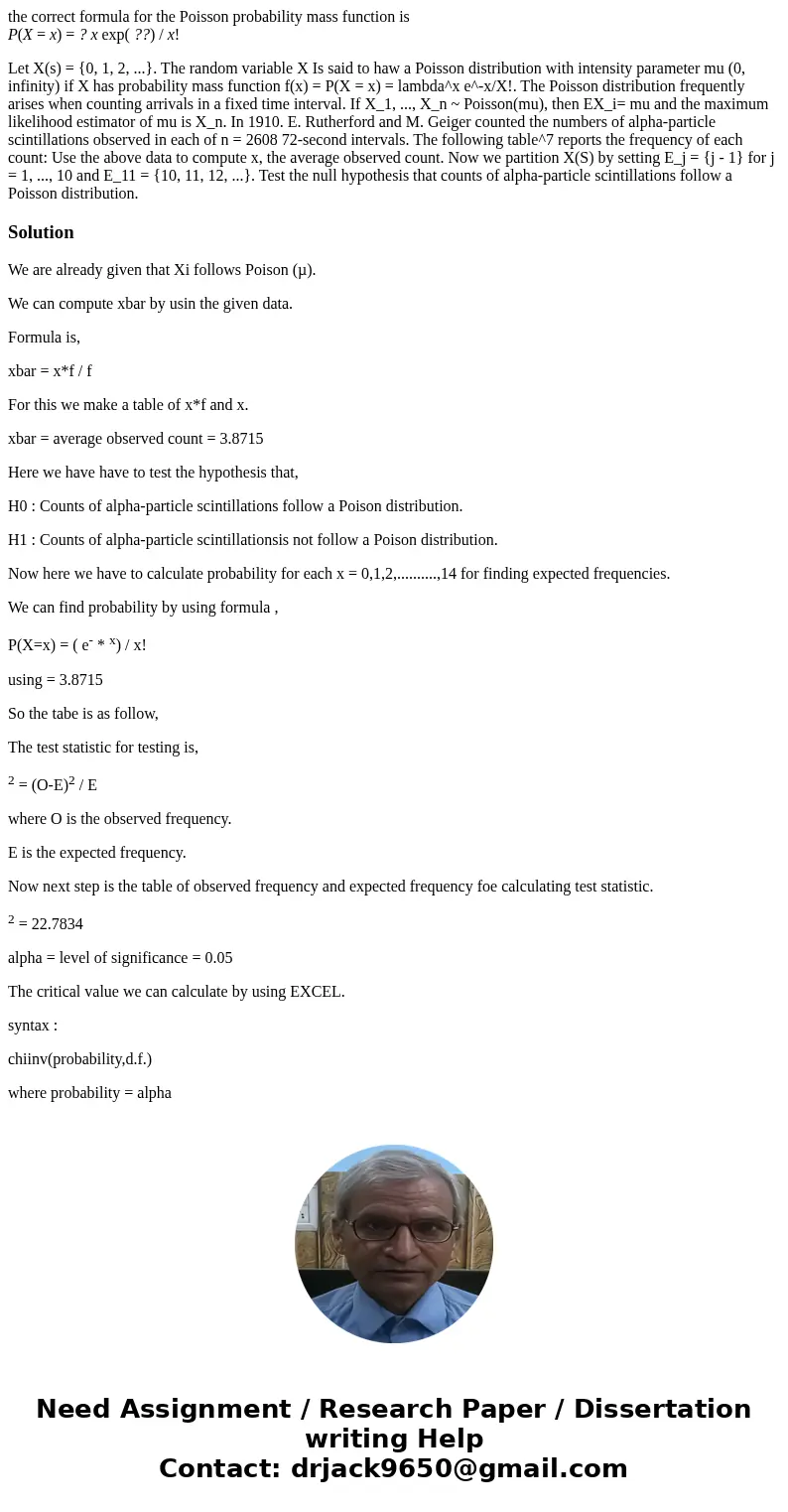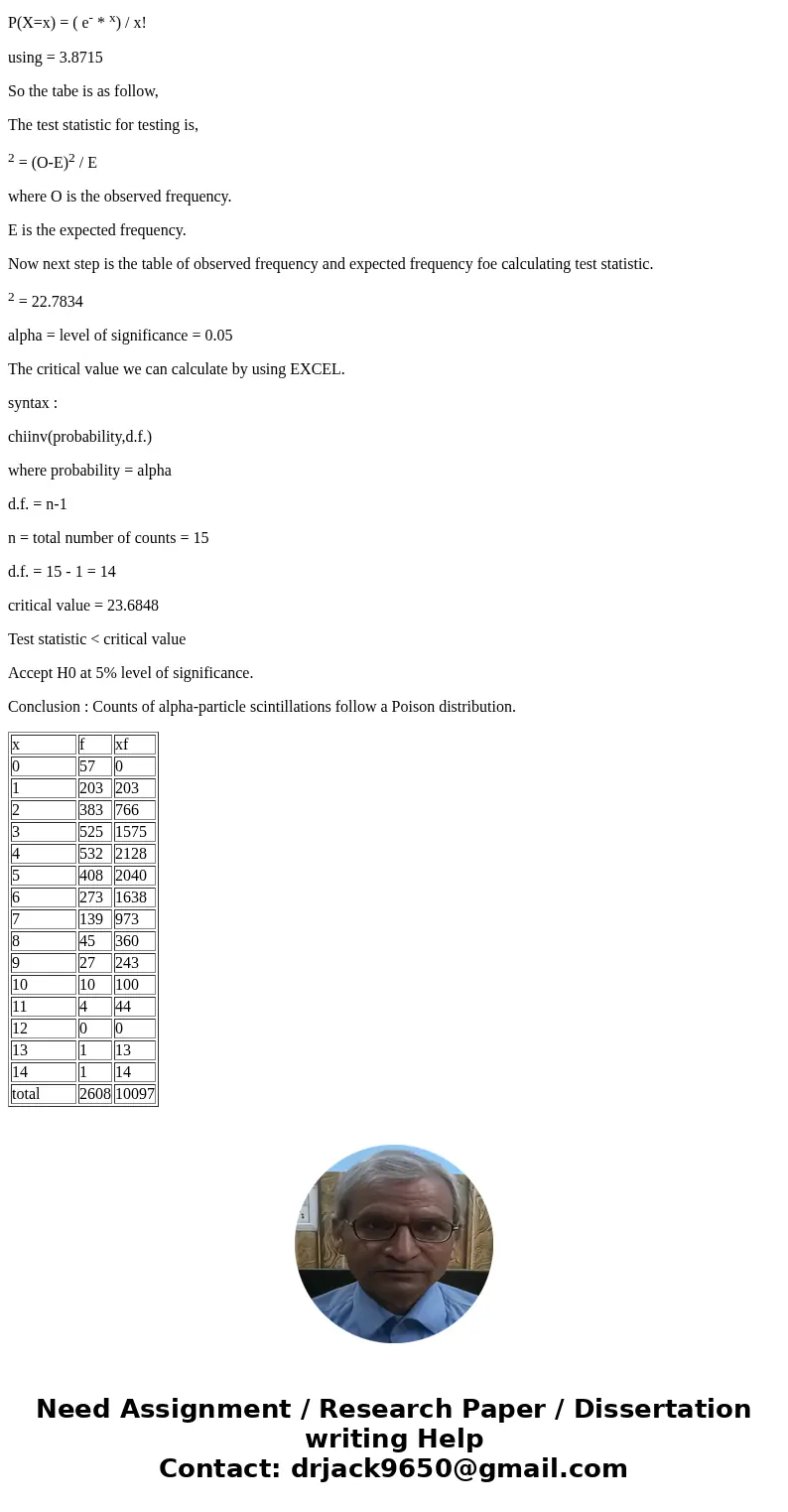the correct formula for the Poisson probability mass functio
the correct formula for the Poisson probability mass function is
P(X = x) = ? x exp( ??) / x!
Solution
We are already given that Xi follows Poison (µ).
We can compute xbar by usin the given data.
Formula is,
xbar = x*f / f
For this we make a table of x*f and x.
xbar = average observed count = 3.8715
Here we have have to test the hypothesis that,
H0 : Counts of alpha-particle scintillations follow a Poison distribution.
H1 : Counts of alpha-particle scintillationsis not follow a Poison distribution.
Now here we have to calculate probability for each x = 0,1,2,..........,14 for finding expected frequencies.
We can find probability by using formula ,
P(X=x) = ( e- * x) / x!
using = 3.8715
So the tabe is as follow,
The test statistic for testing is,
2 = (O-E)2 / E
where O is the observed frequency.
E is the expected frequency.
Now next step is the table of observed frequency and expected frequency foe calculating test statistic.
2 = 22.7834
alpha = level of significance = 0.05
The critical value we can calculate by using EXCEL.
syntax :
chiinv(probability,d.f.)
where probability = alpha
d.f. = n-1
n = total number of counts = 15
d.f. = 15 - 1 = 14
critical value = 23.6848
Test statistic < critical value
Accept H0 at 5% level of significance.
Conclusion : Counts of alpha-particle scintillations follow a Poison distribution.
| x | f | xf |
| 0 | 57 | 0 |
| 1 | 203 | 203 |
| 2 | 383 | 766 |
| 3 | 525 | 1575 |
| 4 | 532 | 2128 |
| 5 | 408 | 2040 |
| 6 | 273 | 1638 |
| 7 | 139 | 973 |
| 8 | 45 | 360 |
| 9 | 27 | 243 |
| 10 | 10 | 100 |
| 11 | 4 | 44 |
| 12 | 0 | 0 |
| 13 | 1 | 13 |
| 14 | 1 | 14 |
| total | 2608 | 10097 |


 Homework Sourse
Homework Sourse